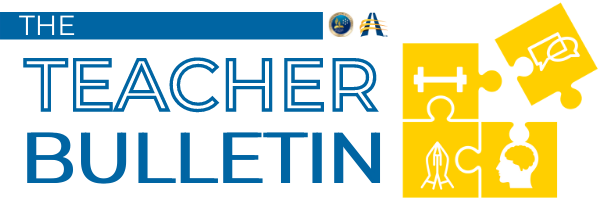Improve Your Daily Classroom Objective Statement With This Tweak
Let's face it, the learning objectives of each lesson are essential in a classroom setting. They set the stage for everything that's to come and give students a clear understanding of what they're supposed to learn. But have you ever considered tweaking the way you present these objectives?
One small change can make a big difference. This article will walk you through a transformative tweak that can significantly enhance your students' engagement and comprehension.
The Glaring Issue With Traditional Classroom Objectives Statements
Let's dive a little deeper into the issue at hand. Setting learning objectives is a common practice in classrooms. Traditional classroom objectives statements, while well-intentioned, often miss the mark in engaging students effectively.
They usually tell students what they are expected to learn but don't actively involve them in the learning process. This method of approach can result in less interest and engagement from students.
Why?
Firstly, students may feel the learning objectives are imposed on them, rather than something they actively participate in defining and understanding.
Secondly, traditional objective statements provide a clear path to the end of the lesson, leaving little room for curiosity and exploration. This can lead to a passive absorption of information, rather than active engagement with the material.
Lastly, these statements don't tap into students' predictive and critical thinking skills. They are not encouraged to ponder or make informed guesses about what's coming next in the lesson.
Traditional objective statements are like giving away the end of a book before you've even read the first chapter. It's not very captivating.
These three reasons highlight why we need a small but significant tweak in classroom objectives statement. It's a change that can enhance student engagement, improve understanding, and promote retention of information.
We need to introduce prediction as a part of the learning objective. Let's dive into how we can do that in the next section.
How to Enhance Your Daily Classroom Objective Statement
If you're looking to enhance your daily classroom objective statement, you've come to the right place. Making just one small change can have a profound impact on your students' engagement, comprehension, and retention of lesson content.
Instead of simply dictating the learning objectives, why not turn them into prediction exercises? Here's how you can make this tweak work in your classroom.
Prediction Instead of Declaration
Traditionally, teachers outline what their students are about to learn at the start of every lesson. This method, while straightforward, only sometimes engender interest or engagement.
On the other hand, predictions can be a more engaging way to introduce learning objectives. A focus change like this helps stimulate students' curiosity and actively involve them in learning.
How to Implement Predictive Learning Objectives
The process is simple. Instead of writing out the learning objectives, present your students with a scenario related to the lesson's content. Encourage them to speculate or predict what might happen or what they might learn from it. This engages their minds and primes them for the information you're about to present. Here are some steps to guide you through this process:
Present a Scenario: Start the lesson by telling a short, relevant story or describing a situation that is related to the lesson content.
Ask for Predictions: Once you've set the scene, ask your students to predict what might happen next or what they believe they will learn.
Facilitate a Discussion: Give your students a chance to share and explain their predictions. This encourages critical thinking and allows them to learn from each other.
Reveal the Learning Objectives: After the discussion, reveal the day's learning objectives. Students will likely find that their predictions closely align with these objectives, reinforcing their understanding of the material.
Why Predictive Learning Objectives Work
"Prediction is not just one of the things your brain does. It is the primary function of the neocortex, and the foundation of intelligence." - Jeff Hawkins, neuroscientist and co-founder of Numenta.
When students engage in prediction, they activate their neocortex, the part of the brain responsible for higher-order functions like thinking and reasoning. This process helps create a deeper connection to the material and promotes better recall later. Predictions can help students become more invested in the lesson and improve learning outcomes.
Give predictive learning objectives a try in your classroom and see the difference it can make in student engagement and comprehension.





